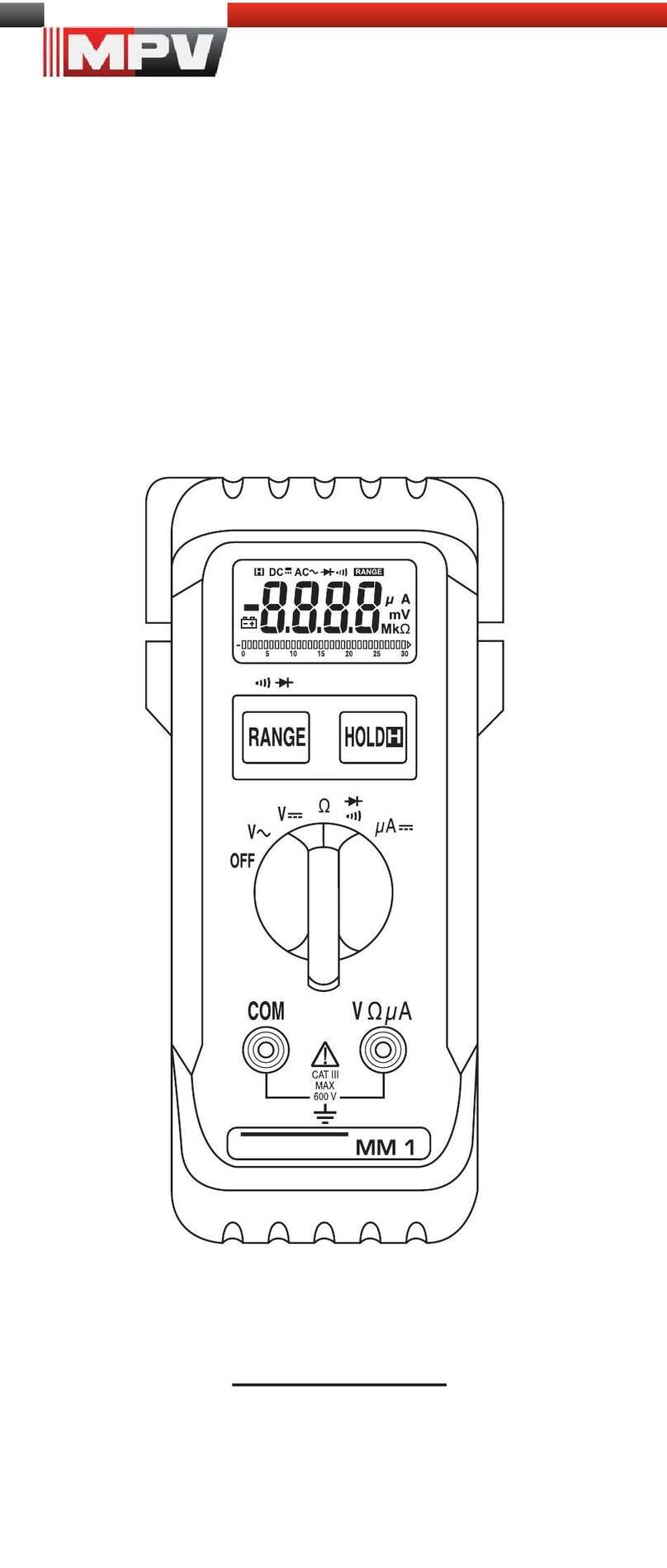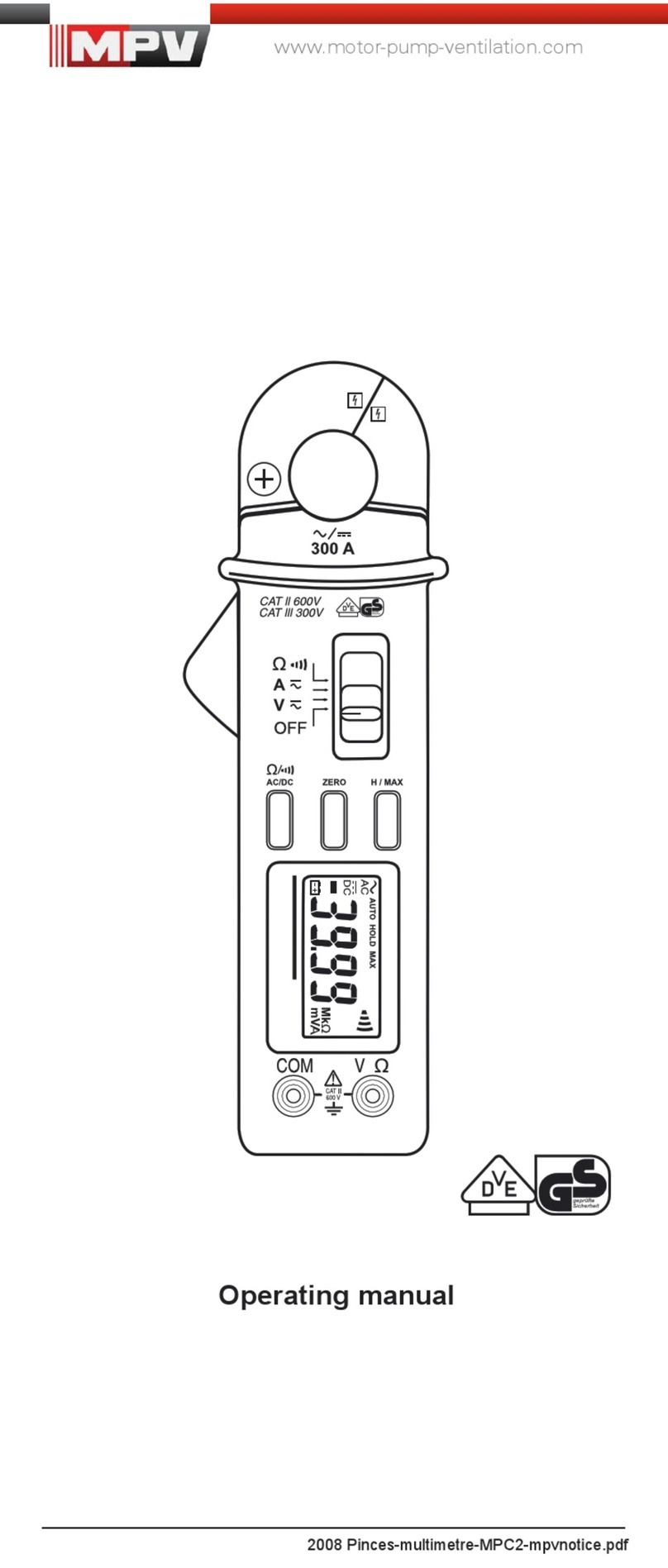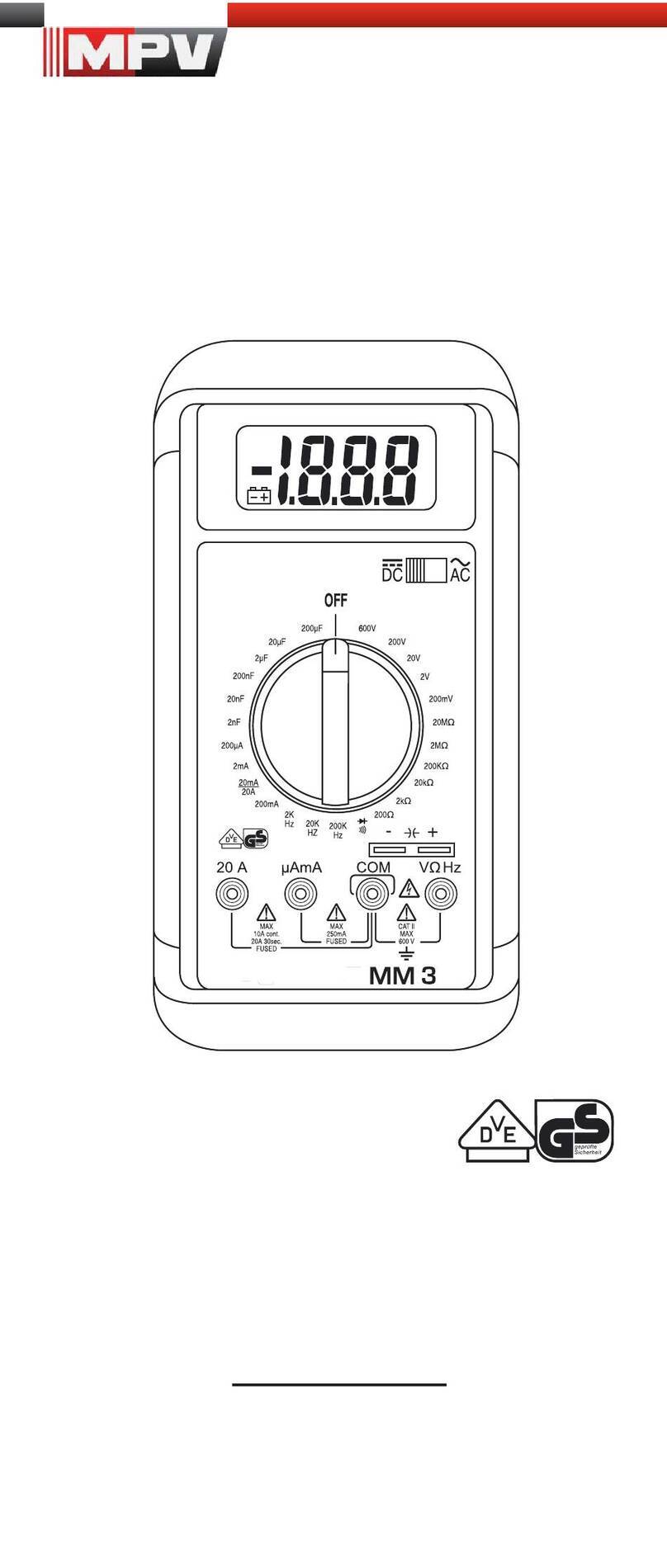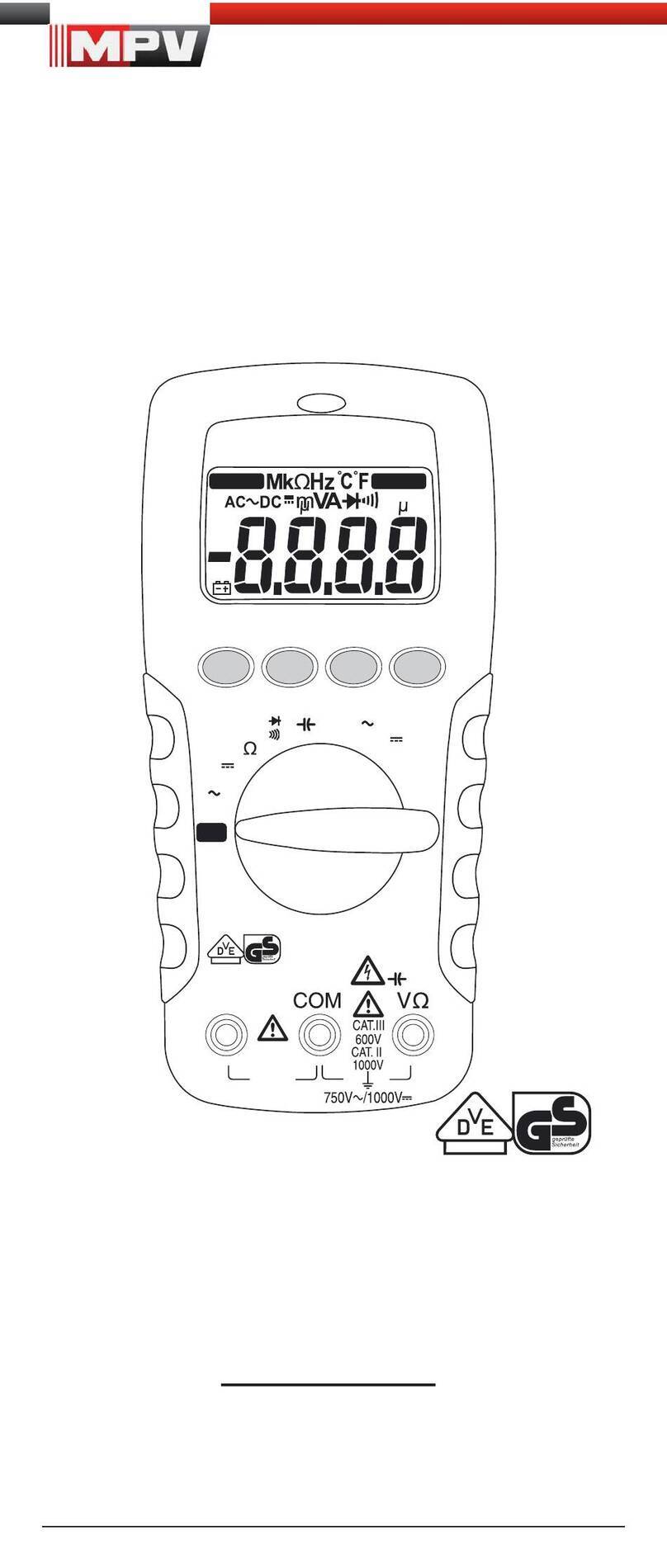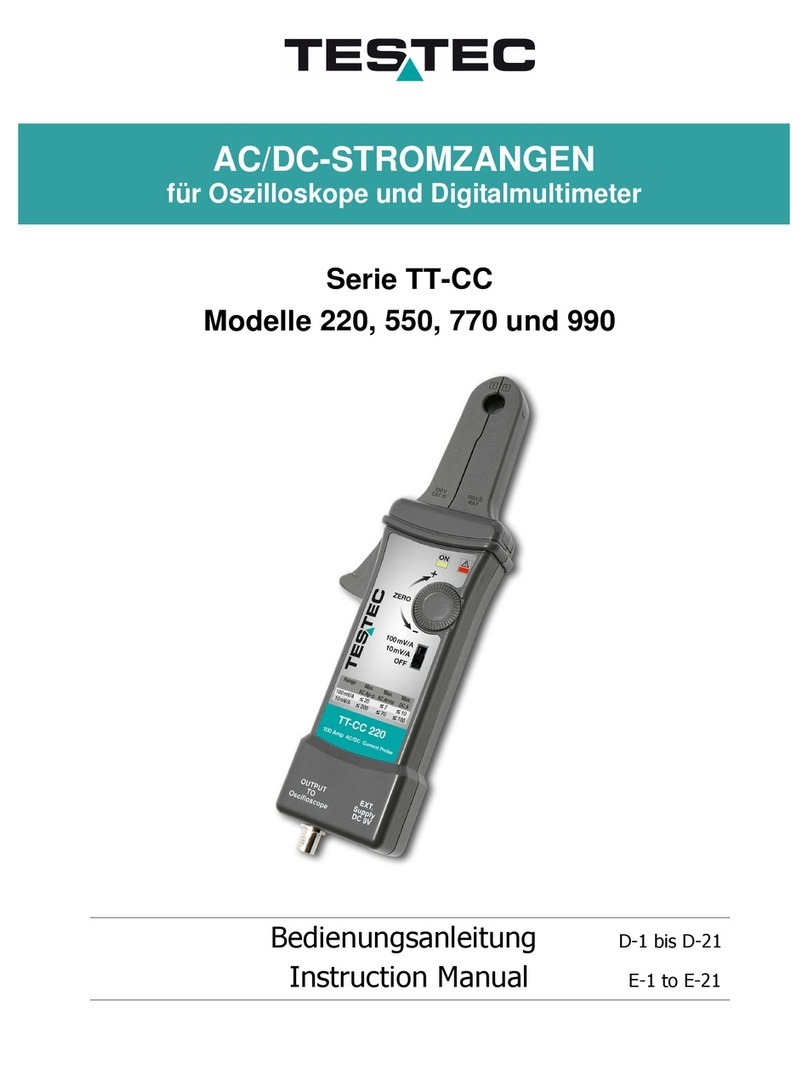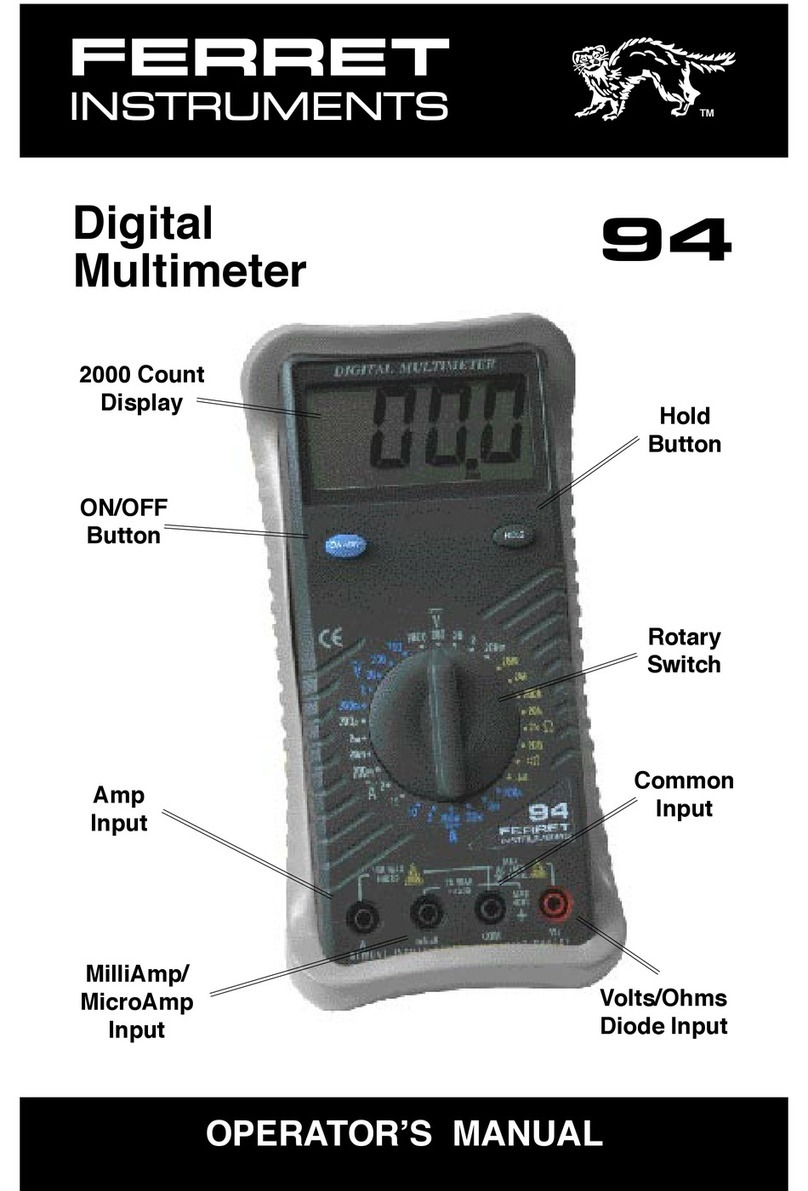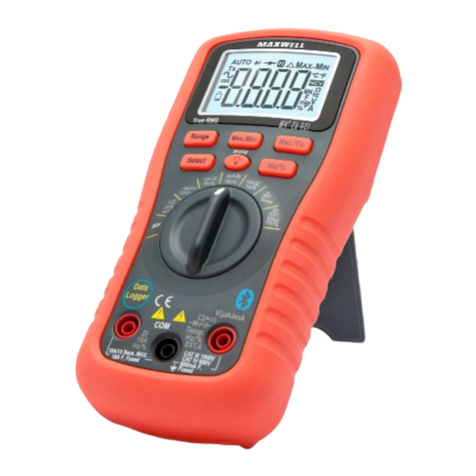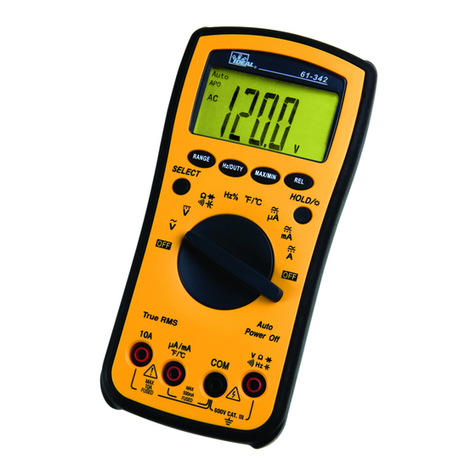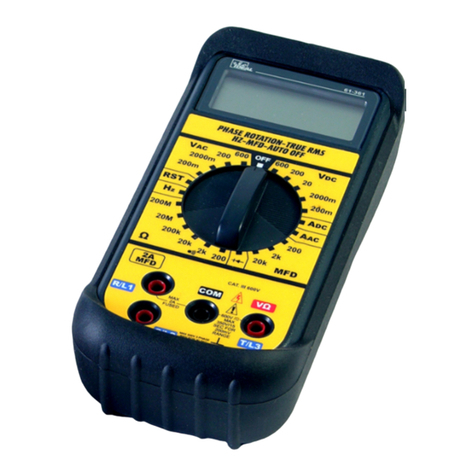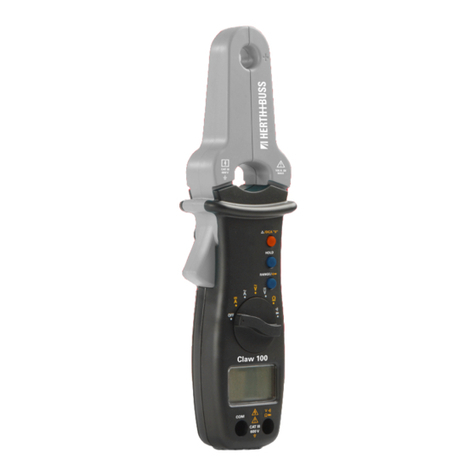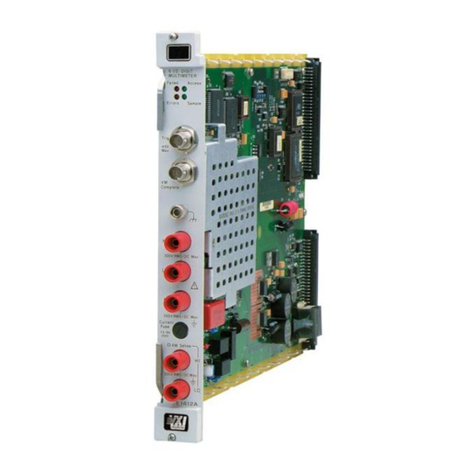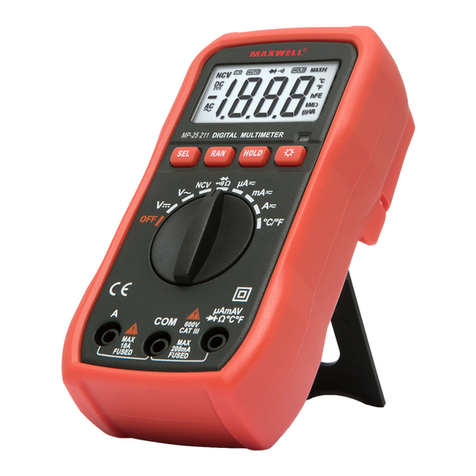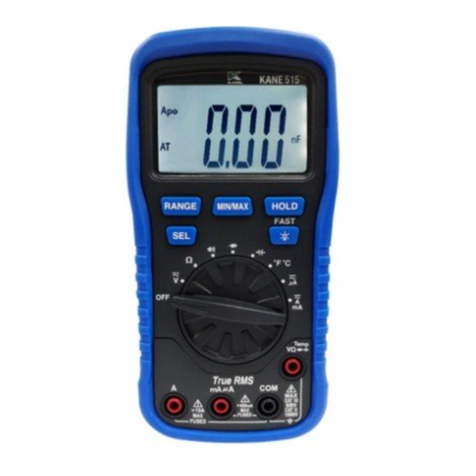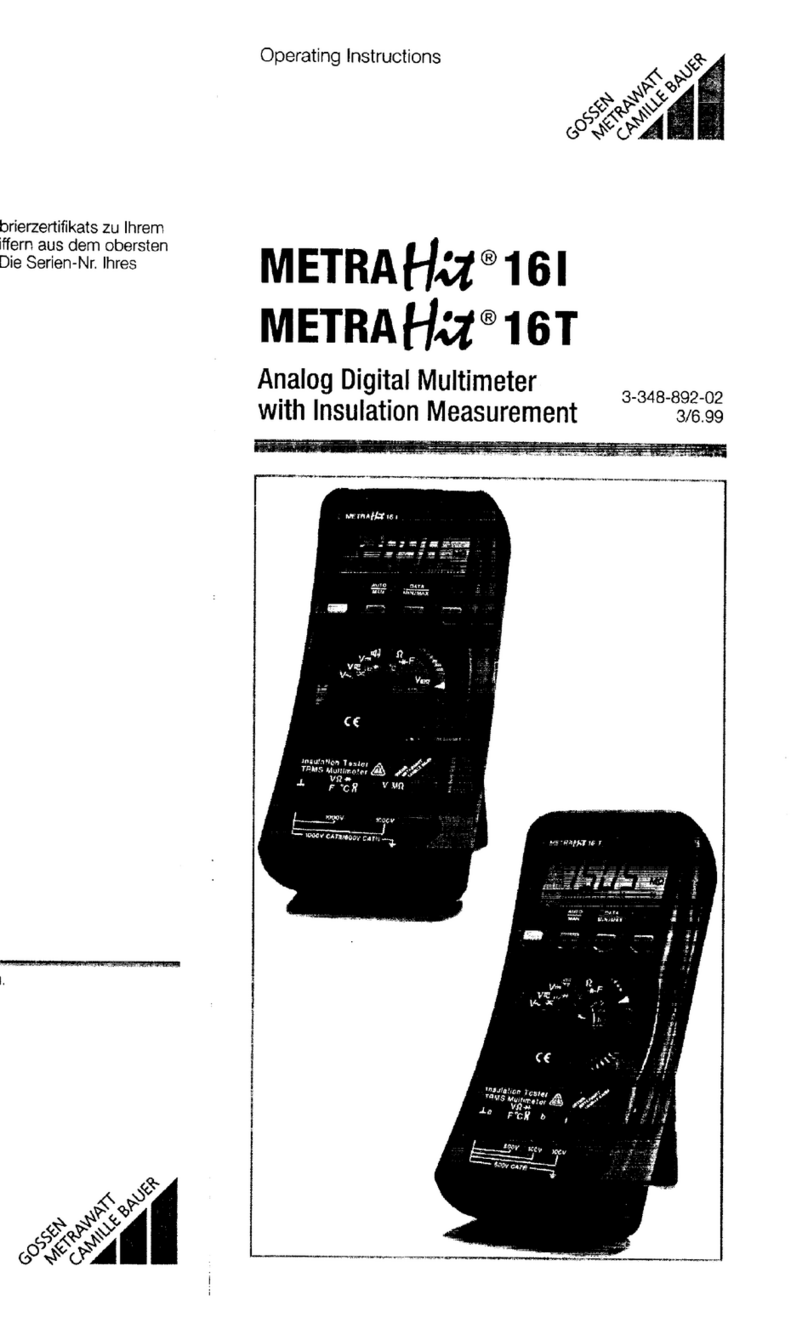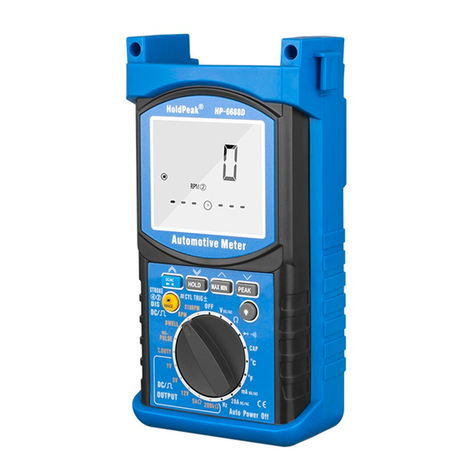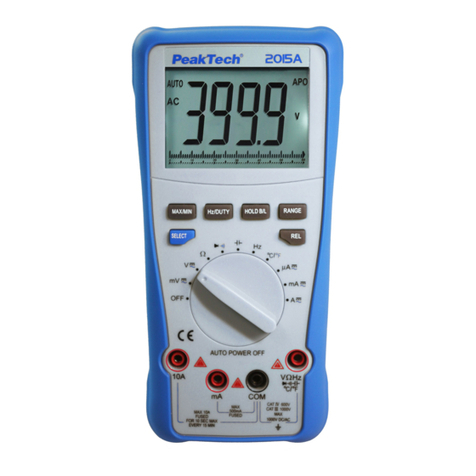MPV MN 11 User manual

BENNING MM 11
Aufwicklung der Sicherheitsmessleitung
Wrapping up the safety test leads
Enroulement du câble de mesure de sécurité
Arrollamiento de la conducción protegida de medición
Navíjení měřících kabelů
Τυλίξτε τα καλώδια μέτρησης
Avvolgimento dei cavetti di sicurezza
Wikkeling van veiligheidsmeetsnoeren
Zwijanie przewodów pomiarowych
Намотка безопасного измерительного провода
Placering av säkerhetsmätsladdar
Emniyet Ölçüm tesisatının sarılması
Aufstellung des BENNING MM 11
Standing up the BENNING MM 11
Installation du BENNING MM 11
Colocación del BENNING MM 11
Postavení BENNING MM 11
Κρατώντας όρθιο το BENNING MM 11
Posizionamento del BENNING MM 11
Opstelling van de multimeter BENNING MM 11
Przyrząd BENNING 11 w pozycji stojącej
Установка прибора BENNING MM 11
Instrumentstöd BENNING MM 11
BENNING MM 11 ‘in kurulumu
0XOWLPHWUH01PSYQRWLFHSGI
www.motor-pump-ventilation.com
8VHUVPDQXDO
M1

Benning Elektrotechnik & Elektronik GmbH & Co. KG
Münsterstraße 135 - 137
D - 46397 Bocholt
Telefon ++49 (0) 2871- 93 - 0 • Fax ++49 (0) 2871- 93 - 429
Bild 10: Frequenzmessung
Fig. 10: Frequency measurement
Fig. 10: Mesure de fréquence
Fig. 10: Medición de frecuencia
obr. 10: Měření frekvence
σχήμα 10:
Μέτρηση συχνότητας/ λόγος μηχανικού παλμού
ill. 10: Misura di frequenza
Fig. 10: Frequentiemeting
Rys.10: Pomiar częstotliwości
рис. 10 Измерение частоты
Fig. 10: Frekvensmätning
Resim 10: Frekans Ölçümü
Bild 11: Temperaturmessung
Fig. 11: Temperature measurement
Fig. 11: Mesure de la température
Fig. 11: Medición de temperatura
obr. 11: Měření teploty
σχήμα 11: Μέτρηση θερμοκρασίας
ill. 11: Misura di temperatura
Fig. 11: Temperatuurmeting
Rys.11: Pomiar temperatury
рис. 11 Измерение температуры
Fig. 11: Temperaturmätning
Resim 11: Isı Ölçümü
Bild 12: Batteriewechsel
Fig. 12: Battery replacement
Fig. 12: Remplacement de la pile
Fig. 12: Cambio de pila
obr. 12: Výměna baterií
σχήμα 12: Αντικατάσταση μπαταρίας
ill. 12: Sostituzione batterie
Fig. 12: Vervanging van de batterijen
Rys.12: Wymiana baterii
рис. 12 Замена батарейки
Fig. 12: Batteribyte
Resim 12: Batarya Değişimi
Bild 13: Sicherungswechsel
Fig. 13: Fuse replacement
Fig. 13: Remplacement des fusibles
Fig. 13: Cambio de fusible
obr. 13: Výměna pojistek
σχήμα 13: αντικατάσταση ασφάλειας
ill. 13: Sostituzione fusibile
Fig. 13: Vervanging van de smeltzekeringen
Rys.13: Wymiana bezpiecznika
рис. 13 Замена предохранителя
Fig. 13: Säkringsbyte
Resim 13: Sigorta Değişimi
0XOWLPHWUH01PSYQRWLFHSGI
www.motor-pump-ventilation.com

Benning Elektrotechnik & Elektronik GmbH & Co. KG
Münsterstraße 135 - 137
D - 46397 Bocholt
Telefon ++49 (0) 2871- 93 - 0 • Fax ++49 (0) 2871- 93 - 429
D F E I S
09/ 200709/ 2007
BENNING MM 11
BENNING MM 11
Bild 10: Frequenzmessung
Fig. 10: Frequency measurement
Fig. 10: Mesure de fréquence
Fig. 10: Medición de frecuencia
obr. 10: Měření frekvence
σχήμα 10:
Μέτρηση συχνότητας/ λόγος μηχανικού παλμού
ill. 10: Misura di frequenza
Fig. 10: Frequentiemeting
Rys.10: Pomiar częstotliwości
рис. 10 Измерение частоты
Fig. 10: Frekvensmätning
Resim 10: Frekans Ölçümü
Bild 11: Temperaturmessung
Fig. 11: Temperature measurement
Fig. 11: Mesure de la température
Fig. 11: Medición de temperatura
obr. 11: Měření teploty
σχήμα 11: Μέτρηση θερμοκρασίας
ill. 11: Misura di temperatura
Fig. 11: Temperatuurmeting
Rys.11: Pomiar temperatury
рис. 11 Измерение температуры
Fig. 11: Temperaturmätning
Resim 11: Isı Ölçümü
Bild 12: Batteriewechsel
Fig. 12: Battery replacement
Fig. 12: Remplacement de la pile
Fig. 12: Cambio de pila
obr. 12: Výměna baterií
σχήμα 12: Αντικατάσταση μπαταρίας
ill. 12: Sostituzione batterie
Fig. 12: Vervanging van de batterijen
Rys.12: Wymiana baterii
рис. 12 Замена батарейки
Fig. 12: Batteribyte
Resim 12: Batarya Değişimi
Bild 13: Sicherungswechsel
Fig. 13: Fuse replacement
Fig. 13: Remplacement des fusibles
Fig. 13: Cambio de fusible
obr. 13: Výměna pojistek
σχήμα 13: αντικατάσταση ασφάλειας
ill. 13: Sostituzione fusibile
Fig. 13: Vervanging van de smeltzekeringen
Rys.13: Wymiana bezpiecznika
рис. 13 Замена предохранителя
Fig. 13: Säkringsbyte
Resim 13: Sigorta Değişimi
Bild 14: Aufwicklung der Sicherheitsmessleitung
Fig. 14: Wrapping up the safety test leads
Fig. 14: Enroulement du câble de mesure de sécurité
Fig. 14: Arrollamiento de la conducción protegida de medición
obr. 14: Navíjení měřících kabelů
σχήμα 14: Τυλίξτε τα καλώδια μέτρησης
ill. 14: Avvolgimento dei cavetti di sicurezza
Fig. 14: Wikkeling van veiligheidsmeetsnoeren
Rys.14: Zwijanie przewodów pomiarowych
рис. 14 Намотка безопасного измерительного провода
Fig. 14: Placering av säkerhetsmätsladdar
Resim 14: Emniyet Ölçüm tesisatının sarılması
Bild 15: Aufstellung des 01
Fig. 15: Standing up the 01
Fig. 15: Installation du 01
Fig. 15: Colocación del 01
obr. 15: Postavení 01
σχήμα 15: Κρατώντας όρθιο το 01
ill. 15: Posizionamento del 01
Fig. 15: Opstelling van de multimeter 01
Rys.15: Przyrząd 01 w pozycji stojącej
рис. 15 Установка прибора 01
Fig. 15: Instrumentstöd 01
Resim 15: 01 ‘in kurulumu
DBedienungsanleitung
Operating manual
FNotice d‘emploi
EInstrucciones de servicio
Návod k obsluze
Οδηγίες χρήσεως
IIstruzioni d’uso
Gebruiksaanwijzing
Instrukcja obsługi
Инструкция по эксплуатации
индикатора напряжения
SBruksanvisning
Kullanma Talimati
0XOWLPHWUH01PSYQRWLFHSGI
www.motor-pump-ventilation.com

09/ 2007
BENNING MM 11
D F E I S
09/ 2007
BENNING MM 11
09/ 2007
Bild 1: Gerätefrontseite
Fig. 1: Front tester panel
Fig. 1: Panneau avant de l‘appareil
Fig. 1: Parte frontal del equipo
obr. 1: Přední strana přístroje
σχήμα 1: Μπροστινή όψη
ill. 1: Lato anteriore apparecchio
Fig. 1: Voorzijde van het apparaat
Rys.1: Panel przedni przyrządu
рис. 1 Фронтальная сторона прибора
Fig. 1: Framsida
Resim 1: Cihaz Ön Yüzü
Bild 2: Gleichspannungsmessung
Fig. 2: Direct voltage measurement
Fig. 2: Mesure de tension continue
Fig. 2: Medición de tension contínua
obr. 2: Měření stejnosměrného napětí
σχήμα 2: DC- μέτρηση
ill. 2: Misura tensione continua
Fig. 2: Meten van gelijkspanning
Rys.2: Pomiar napięcia stałego
рис. 2
Измерение напряжения постоянного тока
Fig. 2: Likspänningsmätning
Resim 2: Doğru Gerilim Ölçümü
Bild 3: Wechselspannungsmessung
Fig. 3: Alternating voltage measurement
Fig. 3: Mesure de tension alternative
Fig. 3: Medición de tensión alterna
obr. 3: Měření střídavého napětí
σχήμα 3: AC- μέτρηση
ill. 3: Misura tensione alternata
Fig. 3: Meten van wisselspanning
Rys.3: Pomiar napięcia przemiennego
рис. 3
Измерение напряжения переменного тока
Fig. 3: Växelspänningsmätning
Resim 3: Alternatif Gerilim Ölçümü
Bild 4: Gleichstrommessung
Fig. 4: DC current measurement
Fig. 4: Mesure de courant continu
Fig. 4: Medición de corriente contínua
obr. 4: Měření stejnosměrného proudu
σχήμα 4: DC- μέτρηση
ill. 4: Misura corrente continua
Fig. 4: Meten van gelijkstroom
Rys.4: Pomiar prądu stałego
рис. 4 Измерение постоянного тока
Fig. 4: Likströmsmätning
Resim 4: Doğru Akım Ölçümü
Bild 5: Wechselstrommessung
Fig. 5: AC current measurement
Fig. 5: Mesure de courant alternatif
Fig. 5: Medición de corriente alterna
obr. 5: Měření střídavého proudu
σχήμα 5: AC- μέτρηση
ill. 5: Misura corrente alternata
Fig. 5: Meten van wisselstroom
Rys.5: Pomiar prądu przemiennego
рис. 5 Измерение переменного тока
Fig. 5: Växelströmsmätning
Resim 5: Alternatif Akım Ölçümü
Bild 8: Durchgangsprüfung mit Summer
Fig. 8: Continuity Testing with buzzer
Fig. 8: Contrôle de continuité avec ronfleur
Fig. 8: Control de continuidad con vibrador
obr. 8: Zkoušku obvodu
σχήμα 8: Έλεγχος συνέχειας με βομβητή
ill. 8: Prova di continuità con cicalino
Fig. 8: Doorgangstest met akoestisch signaal
Rys.8: Sprawdzenie ciągłości obwodu
рис. 8
Проверка прохождения тока с зуммером
Fig. 8: Genomgångstest med summer
Resim 8: Sesli Uyarıcı ile Süreklilik Kontrolü
Bild 9: Kapazitätsmessung
Fig. 9: Capacity Testing
Fig. 9: Mesure de capacité
Fig. 9: Medición de capacidad
obr. 9: Měření kapacity
σχήμα 9: Μέτρηση χωρητικότητας
ill. 9: Misura di capacità
Fig. 9: Capaciteitsmeting
Rys.9: Pomiar pojemności
рис. 9 Измерение емкости
Fig. 9: Kapacitansmätning
Resim 9: Kapasite Ölçümü
Bild 6: Widerstandsmessung
Fig. 6: Resistance measurement
Fig. 6: Mesure de résistance
Fig. 6: Medición de resistencia
obr. 6: Měření odporu
σχήμα 6: Μέτρηση αντίστασης
ill. 6: Misura di resistenza
Fig. 6: Weerstandsmeting
Rys.6: Pomiar rezystancji
рис. 6 Измерение сопротивления
Fig. 6: Resistansmätning
Resim 6: Direnç Ölçümü
Bild 7: Diodenprüfung
Fig. 7: Diode Testing
Fig. 7: Contrôle de diodes
Fig. 7: Verificación de diodos
obr. 7: test diod
σχήμα 7: Έλεγχος διόδου.
ill. 7: Prova diodi
Fig. 7: Diodecontrole
Rys.7: Pomiar diody
рис. 7 Проверка диодов
Fig. 7: Diod-test
Resim 7: Diyot Ölçümü
09/ 2007
BENNING MM 11
D F E I S
0XOWLPHWUH01PSYQRWLFHSGI
www.motor-pump-ventilation.com

09/ 2007
Bild 2: Gleichspannungsmessung
Fig. 2: Direct voltage measurement
Fig. 2: Mesure de tension continue
Fig. 2: Medición de tension contínua
obr. 2: Měření stejnosměrného napětí
σχήμα 2: DC- μέτρηση
ill. 2: Misura tensione continua
Fig. 2: Meten van gelijkspanning
Rys.2: Pomiar napięcia stałego
рис. 2
Измерение напряжения постоянного тока
Fig. 2: Likspänningsmätning
Resim 2: Doğru Gerilim Ölçümü
Bild 3: Wechselspannungsmessung
Fig. 3: Alternating voltage measurement
Fig. 3: Mesure de tension alternative
Fig. 3: Medición de tensión alterna
obr. 3: Měření střídavého napětí
σχήμα 3: AC- μέτρηση
ill. 3: Misura tensione alternata
Fig. 3: Meten van wisselspanning
Rys.3: Pomiar napięcia przemiennego
рис. 3
Измерение напряжения переменного тока
Fig. 3: Växelspänningsmätning
Resim 3: Alternatif Gerilim Ölçümü
Bild 4: Gleichstrommessung
Fig. 4: DC current measurement
Fig. 4: Mesure de courant continu
Fig. 4: Medición de corriente contínua
obr. 4: Měření stejnosměrného proudu
σχήμα 4: DC- μέτρηση
ill. 4: Misura corrente continua
Fig. 4: Meten van gelijkstroom
Rys.4: Pomiar prądu stałego
рис. 4 Измерение постоянного тока
Fig. 4: Likströmsmätning
Resim 4: Doğru Akım Ölçümü
Bild 5: Wechselstrommessung
Fig. 5: AC current measurement
Fig. 5: Mesure de courant alternatif
Fig. 5: Medición de corriente alterna
obr. 5: Měření střídavého proudu
σχήμα 5: AC- μέτρηση
ill. 5: Misura corrente alternata
Fig. 5: Meten van wisselstroom
Rys.5: Pomiar prądu przemiennego
рис. 5 Измерение переменного тока
Fig. 5: Växelströmsmätning
Resim 5: Alternatif Akım Ölçümü
BENNING MM 11
0XOWLPHWUH01PSYQRWLFHSGI
www.motor-pump-ventilation.com

09/ 2007
09/ 2007
BENNING MM 11
Bild 1: Gerätefrontseite
Fig. 1: Front tester panel
Fig. 1: Panneau avant de l‘appareil
Fig. 1: Parte frontal del equipo
obr. 1: Přední strana přístroje
σχήμα 1: Μπροστινή όψη
ill. 1: Lato anteriore apparecchio
Fig. 1: Voorzijde van het apparaat
Rys.1: Panel przedni przyrządu
рис. 1
Fig. 1: Framsida
Resim 1: Cihaz Ön Yüzü
Bild 8: Durchgangsprüfung mit Summer
Fig. 8: Continuity Testing with buzzer
Fig. 8: Contrôle de continuité avec ronfleur
Fig. 8: Control de continuidad con vibrador
obr. 8: Zkoušku obvodu
σχήμα 8: Έλεγχος συνέχειας με βομβητή
ill. 8: Prova di continuità con cicalino
Fig. 8: Doorgangstest met akoestisch signaal
Rys.8: Sprawdzenie ciągłości obwodu
рис. 8
Проверка прохождения тока с зуммером
Fig. 8: Genomgångstest med summer
Resim 8: Sesli Uyarıcı ile Süreklilik Kontrolü
Bild 9: Kapazitätsmessung
Fig. 9: Capacity Testing
Fig. 9: Mesure de capacité
Fig. 9: Medición de capacidad
obr. 9: Měření kapacity
σχήμα 9: Μέτρηση χωρητικότητας
ill. 9: Misura di capacità
Fig. 9: Capaciteitsmeting
Rys.9: Pomiar pojemności
рис. 9 Измерение емкости
Fig. 9: Kapacitansmätning
Resim 9: Kapasite Ölçümü
Bild 6: Widerstandsmessung
Fig. 6: Resistance measurement
Fig. 6: Mesure de résistance
Fig. 6: Medición de resistencia
obr. 6: Měření odporu
σχήμα 6: Μέτρηση αντίστασης
ill. 6: Misura di resistenza
Fig. 6: Weerstandsmeting
Rys.6: Pomiar rezystancji
рис. 6 Измерение сопротивления
Fig. 6: Resistansmätning
Resim 6: Direnç Ölçümü
Bild 7: Diodenprüfung
Fig. 7: Diode Testing
Fig. 7: Contrôle de diodes
Fig. 7: Verificación de diodos
obr. 7: test diod
σχήμα 7: Έλεγχος διόδου.
ill. 7: Prova diodi
Fig. 7: Diodecontrole
Rys.7: Pomiar diody
рис. 7 Проверка диодов
Fig. 7: Diod-test
Resim 7: Diyot Ölçümü
0XOWLPHWUH01PSYQRWLFHSGI
www.motor-pump-ventilation.com

09/ 2007
Operating instructions
Digital multimeter for
- Direct voltage measurements
- Alternating voltage measurements
- Direct current measurement
- Alternating current measurement
- Resistance measurements
- Diode test
- Continuity testing
- Capacity measurement
- Frequency measurement
- Pulse duty ratio measurement
- Temperature measurement
Table of contents
1. User notes
2. Safety note
3. Scope of delivery
4. Unit description
5. General information
6. Environment conditions
7. Electricalspecications
8. Making measurements with the 01
9. Maintenance
10. Application of rubber protection frame
11. Technical data of the measuring accessories
12. Environmental notice
1. User notes
These operating instructions are intended for
- skilled electricians and
- trained electronics personnel.
The 01 is intended for making measurements in dry environ-
ment. It must not be used in power circuits with a nominal voltage higher than
1000 V DC and 750 V AC (More details in Section 6. “Environmental condi-
tions”) The following symbols are used in these operating instructions and on
the 01:
Warning of electrical danger!
Indicates instructions which must be followed to avoid danger to
persons.
Important, comply with the documentation!
The symbol indicates that the information provided in the operating
instructions must be complied with in order to avoid risks.
This symbol on the 01 means that the
01 is totally insulated (protection class II).
This symbol on the 01 indicates the built in fuses.
This symbol appears in the display to indicate a discharged battery.
This symbol designates the „diode test” range.
This symbol designates the „continuity test” range.
The buzzer is used for the acoustic result output.
This symbol designates the „capacity test” range.
(DC) Direct voltage or current.
(AC) Alternating voltage or current.
Ground (Voltage against ground).
0XOWLPHWUH01PSYQRWLFHSGI
www.motor-pump-ventilation.com

09/ 2007
2. Safety note
The instrument is built and tested in accordance with
DIN VDE 0411 part 1/ EN 61010-1
and has left the factory in perfectly safe technical state.
To maintain this state and ensure safe operation of the appliance tester, the user
must observe the notes and warnings given in these instructions at all times.
The unit may be used only in power circuits within the
overvoltage category III with a conductor for 600 V max. to
earth, or within overvoltage category II with a conductor for
1000 V against ground.
Remember that work on electrical components of all kinds is
dangerous. Even low voltages of 30 V AC and 60 V DC may be
dangerous to human life.
Before starting the appliance tester up, always check it as well
as all cables and wires for signs of damage.
Should it appear that safe operation of the appliance tester is no longer possible,
it should be shut down immediately and secured to prevent it being switched
on accidentally.
It may be assumed that safe operation is no longer possible:
- if the instrument or the measuring cables show visible signs of damage, or
- if the appliance tester no longer functions, or
- after long periods of storage under unfavourable conditions, or
- after being subjected to rough transport.
In order to avoid danger,
- do not touch the bare prod tips of the measuring cables
- insert the measurement lines in the appropriately
designated measuring sockets on the multimeter
3. Scope of delivery
The scope of delivery for the 01 comprises:
3.1 one 01
3.2 one software 01 PC-Win MM 11
3.3 one serial data cable with USB 2.0 compatible connection
3.4 one safety measuring cable, red (L = 1.4 m; prod tip diameter = 4 mm)
3.5 one safety measuring cable, black (L=1.4 m; prod tip diameter = 4 mm)
3.6 one wire temperature sensor type K,
3.7 one adapter for wire temperature sensor,
3.8 one rubber protection frame,
3.9 one magnetic holder with adapter and strap
3.10 one compact protective pouch,
3.11
a 9 V block battery and two different fuses (fitted in unit as first equipment),
3.12 one operating instructions manual
Note on optional accessory:
- Temperature probe (K-type) made of V4A tube (P.no 044121)
application: insertion probe for soft-plastic materials, liquids, gas and air
measuring range: - 196 °C up to 800 °C
dimensions: length = 210 mm, tube length = 120 mm, tube diameter =
3 mm, V4A
Parts subject to wear:
- The 01 contains fuses as protection against overload:
One fuse, rated current 1 A quick-acting (600 V), 10 kA, D = 10 mm, L = 35
mm (P.no 749598) and one fuse, rated current 15 A quick-acting (600 V),
100 kA, D = 10 mm, L = 38 mm (P.no 749595).
-
The 01 is supplied by a fitted 9 V block battery (IEC 6 LR 61).
- The above-mentioned safety measuring cables ATL-2 (tested accessories,
P.no 044118) correspond to CAT III 1000 V and are approved for a current
of 10 A.
4. Description of appliance tester
See figure 1: Appliance front face
The display and operator control elements specified in Fig. 1 are designated
as follows:
Digital display, for the measurement value, bar graph display, overranging
display
0XOWLPHWUH01PSYQRWLFHSGI
www.motor-pump-ventilation.com

09/ 2007
Sub-display
Polarity indication
Battery condition indicator
Button (yellow), display lighting,
Button BAR, Bar graph centring and switchover of numerical value (4000/
20000),
Button PEAK H, (Peak hold), peak value storage,
Button AUTO H, (Auto-Hold), measured value storage,
Button (blue), for DC voltage/ direct current or AC voltage/ current (AC),
resistance measurement Ω or LVΩ, diode or continuity testing, frequency or
pulse ratio measurement, temperature measurement in °C or in °F,
Button M/M/A, storage of the highest, lowest measured values, and the
mean value,
Button REL ∆, relative value function,
Button RANGE, switchover automatic/ manual measuring range,
Rotary switch, for selecting the measurement function,
Jack (positive1), for V, Ω, Hz, °C,
COM jack, common socket for current voltage, resistance, frequency, tem-
perature, capacity measurement, continuity and diode testing,
Jack (positive1), for mA range, for currents up to 200 mA,
Jack (positive1), for 10 A range, for currents up to 10 A,
Rubber protective frame
Optical interface, for accommodating the adapter located on the data
cable,
1)
This is what the automatic polarity indication for DC current and voltage refers to
5. General information
5.1 General details on the multimeter
5.1.1 The digital display is a 3 ¾ or 4 ½ digit liquid crystal display with a
13 mm font size and decimal point. The largest display value is 4.000/
20.000.
5.1.2 The bar graph display comprises 42 segments.
5.1.3 The polarity indication is automatic. Only one polarity with respect to
the socket marked “-” is indicated.
5.1.4 The overranging is indicated by “0L” or “- 0L” and, in part, an acoustic
warning.
Warning, no indication and prior warning in the event of an overload
condition! A exceeding of dangerous contact voltage (> 60 V DC/ 30 V
AC rms) is indicated by an additional flashing symbol “”.
5.1.5 The 01 confirms each button press with a signal sound.
Invalid button presses are confirmed by a double signal sound.
In the event of an incorrect circuit of the jack for the mA / A range
the 01 warns with a signal sound and the indication
of in the display .
The acoustic alarm and the indication in the display extinguish
if a safety measuring cable is plugged into the jack for the mA or
A range and the corresponding current measurement range was
selected by means of the rotary switch .
The acoustic alarm and the indication in the display also appear
in the case of a defective fuse, if the safety measuring cable is plugged
into the jack for the mA or A-range and the corresponding current
measurement range was selected by means of the rotary switch .
5.1.6 The 01 features individual setting options which in part
remain active even after a shutdown. In order to change a setting,
press one of the following buttons and simultaneously activate the
01 from its “OFF” switch position.
Button- : Deactivates/ activates the automatic shutdown of the
background lighting after 15 minutes.
Button- 7:
Presetting of the nominal mains frequency (50 Hz or
60 Hz). This adjustment ensures improved stability
and accuracy in AC V mode. These settings are main-
tained even after the 01 is switched off.
The settings are modified only after a new presetting!
Button- :Presetting the temperature measurement in °C or °F.
The settings are modified only after a new presetting!
Button-BLUE : Deactivates/ activates the automatic switch-off after
approx. 30 minutes (APO, Auto-Power-Off).
Button- :Deletion of the internal measuring value memory (see
also Chapter 5.2)
Button- :Deactivates/ activates the fitted buzzer.
5.1.7 The button (yellow) switches on the display illumination. Shutdown
is effected by a renewed press of the button or automatically after 15
mins.
0XOWLPHWUH01PSYQRWLFHSGI
www.motor-pump-ventilation.com

09/ 2007
5.1.8 The button centres the zero point of the analogue bar graph
display in the centre of the display (function: DC voltage/ current). In
the DATA LOG function, the bar graph centring function is not available.
Switch-over by briefly pressing a key. By pressing the key 6
longer (2 seconds), the displayed value can be switched over from
20,000 digits to 4,000 digits. This can be reset by pressing the key
again (2 seconds) or by switching off the 01. This mode
is not available for the following ranges:
7.5/ 7.6 Resistance measurement 200 MΩ and 2 GΩ
7.7 Diode and continuity testing
7.8 Capacity measurement
7.9/ 7.10 Frequency and pulse duty ratio measurement
7.11/ 7.12 Temperature measurement
A switch-over to the lower displaying value might be necessary, if for
V AC and A (mA) AC measurements the frequency shall be displayed
simultaneously in the lower display 2. For this, the measured value (V;
A; mA) must be at least 30 % of the displayable range.
5.1.9 The button (peak value storage) inputs and stores the “Peak
Max-/ Peak Min” value (function: mV, V, mA, and A) with a simultane-
ous indication of “PH” in the display. Each new save of the “Peak Max-/
Peak Min” value is confirmed by an acoustic signal. The “Peak Max-/
Peak Min” value is retrieved by pressing the button and indi-
cated in the subdisplay . A renewed operation of -Button
switches back into a standard mode.
5.1.10 The function (measured value store) stores stable display
values in the subdisplay . In the display the symbol “AH” is shown
simultaneously. As soon as a measured value is input, the subdisplay
is updated with the new value. Unstable measured values or noisy
signals cannot be stored via the -function. A renewed press of the
button switches back into measuring mode. In the following measuring
functions, the device switches over from the automatic to the manual
measuring range to store the measured values ( ). Resistance
measurement, capacity measurement and frequency measurement.
5.1.11 The button (blue) selects the secondary or tertiary functions of the
rotary switch setting:
Rotary switch setting: Secondary function: Tertiary function:
V AC, mV AC V DC, mV DC V AC + DC, mV AC + DC
Ω (Messspannung: 3,3 V) LVΩ (reduced
measuring voltage: 0,6 V)
Diode acoustic continuity testing
mA AC, A AC mA DC, A DC mA AC + DC, A AC + DC
Capacitor
Hz % DF (Duty Factor),
pulse duty ratio
°C °F
Note:
- The function LVΩ(resistance measurement) reduces the measuring
voltage to 0.6 V, so that semiconductor elements operated in conduc-
tion direction such as diodes or transistors do not open.
- Function %DF (Duty Factor) describes the pulse duty ratio of periodic
signals:
DF [%] = T1
T
5.1.12 The button inputs and stores automatically the highest and
lowest measured value as well as the mean value in the subdisplay
. The following values are indicated by indexing: “MAX” indicates the
highest measured value stored, “MIN” indicates the lowest measured
0XOWLPHWUH01PSYQRWLFHSGI
www.motor-pump-ventilation.com

09/ 2007
value and “AVG” the mean value. Press the button for an extended
period of time (2 seconds) to switch back into normal mode.
5.1.13 The button (relative value - function) stores the current
display value in the subdisplay and indicates the difference (offset)
between the stored measured value and the following measured values
in the display .
Example:
Stored reference value: 235 V (subdisplay ), current measured value:
230 V, yields a difference (offset) of 5 V (main display ). A renewed
press of the button switches back into normal mode.
5.1.14 The range button is used to index the manual measuring
ranges whilst simultaneously fading out “AUTO” in the display. Press
the button for an extended period (2 seconds) to select the automatic
range selection (indication “AUTO”):
5.1.15 Level measurement in dB/ dBm: The level measurement in decibel is
the logarithmic ratio of two quantities such as e.g. voltage or current.
If the 01 is in the function mode for alternating voltage
measurement (V AC), press the button (dB/ dBm) for an
extended period of time (2 seconds) to activate the level measurement.
In the subdisplay the voltage level is indicated in dB with a reference
value of 1 V. A renewed press of the Range button (dB/ dBm)
indicates the performance level in dBm (reference value: 1 mW for
600 Ω). The voltage and performance levels are calculated as follows:
Voltage level
in dB:
Reference
value: 1 V LU= 20 x log U
1 V [dB]
Performance
level in dBm:
Reference value:
1 mW an 600 ΩLP= 10 x log P
1 mW [dBm]
U²
LP= 10 x log 600 Ω [dBm]
1 mW
By pressing the button for an extended period of time (2
seconds) (dB/ dBm), there will be a switch back into normal mode.
5.1.16 The measuring rate of the 01 amounts nominally to
2 measurements (20,000 digit) respectively 4 measurements (4,000
digit) per second for the digital display and 20 measurements for the
bar graph display.
5.1.17 The 01 is switched on and off with the rotary switch.
Shutdown position “OFF”.
5.1.18 The 01switches off automatically after approx. 30 min-
utes (APO, Auto-Power-Off). It switches back on again if a button or the
rotary switch is operated.
5.1.19 Temperature coefficient of the measured value: 0.1 x (stated measuring
precision)/ °C < 18 °C or > 28 °C, related to the value for the reference
temperature of 23° C.
5.1.20 The 01is supplied by a fitted 9 V block battery (IEC 6 LR 61).
5.1.21 If the battery voltage drops below the specified operating voltage
(approx. 7 V) of the 01, then an empty battery symbol
( ) appears in the display.
5.1.22 The life span of a battery amounts to approx. 100 hours (alkali bat-
tery).
5.1.23 Appliance dimensions:
(L x W x H) = 200 x 90 x 42 mm without rubber protection frame
(L x W x H) = 212 x 100 x 55 mm with rubber protection frame
Appliance weight:
400 g without rubber protection frame
600 g with rubber protection frame
5.1.24 The safety measuring cables are designed in 4 mm plug-in type tech-
nology. The safety measuring cables supplied are expressly suited for
the rated voltage and the rated current of the 01.
5.1.25 The 01 is protected by a rubber protection frame
against mechanical damage. The rubber protection frame allows the
01 to be set up or hung up during the measurements.
5.1.26 The 01 features at its head an optical interface S. This
is used for the galvanic separation of the measuring signal to a PC/ lap-
top. The enclosed data cable is used for the transmission of measuring
data and is equipped with a USB 2.0 compatible connection.
5.2 Memory function
The 01 is equipped with a measured value memory of
1.000 memory locations. These memory locations can be used to store
display values and retrieve the same at a later date via the display.
5.2.1 STORE (Store display values) 0XOWLPHWUH01PSYQRWLFHSGI
www.motor-pump-ventilation.com

09/ 2007
By an extended operation (2 seconds) of the -button the
01 is set into memory mode. The digital display
shows the symbol “MEM”. The display value is stored by re-pressing
the - button (STORE). The stored value is indicated as a flashing
value in the subdisplay , stating the memory location number. Display
values are continuously stored on memory locations 1 - 1000. A double
acoustic alarm sound signals a full memory store. By an extended
operation (2 seconds) of the -button (STORE), there will be a
switch back into normal mode.
5.2.2 RECALL (Retrieve memory values)
By an extended operation (2 seconds) of the -button
(RECALL) the memory can be read out. In the digital display the
symbol “MEM” and the stored measured value appears.
The memory location no. appears on the subdisplay . The memory
locations 1 - 1000 are selected by means of the button (yellow) and
the button BAR , with an extended press of the button (2 seconds)
causing a fast run-through of the memory locations (10 memory loca-
tions/ second). By an extended operation (2 seconds) of the
-button (RECALL) there is a switch-back to normal mode.
5.2.3 Memory deletion
The memory content of the 01 is deleted by pressing the
button- and simultaneously turning the rotary switch out of
the “OFF” switch position.
5.3 DATA-LOG function
By an extended operation (2 seconds) of the button (blue) the
01 is set into DATA-LOG mode. The digital display
shows the symbol “LOG”. Pressing the button again (2 seconds)
switches back into normal mode. The DATA-LOG function provides for
an automatic storage of measurement series with up to 40.000 meas-
ured values. The measured values can be retrieved for further process-
ing at a later date via the display unit or via the optical interface
. The scan rate which defines the period between two successive
measuring points can be selected from 0.5 seconds to 10 minutes.
Note:
- The RANGE button and the automatic switch-off (APO, Auto-
Power-Off) are not functional in this mode of operation.
- Each operation of the rotary switch interrupts the DATA-LOG
mode.
5.3.1 LOG-RATE (Set scan rate)
If the 01 is in DATA-LOG mode, the scan rate is set
by pressing the button (LOG RATE). The preset scan rate
is indicated in the subdisplay and can be selected by means of the
button (yellow) ▲and the button BAR ▼.
Selectable scan rates: 0.5, 1, 10, 30, 60, 120, 180, 240, 300, 360,
480, 600 seconds. Another press of the button (LOG RATE)
confirms the scan rate and exits the setting mode.
5.3.2 DATA-LOG-IN (Store data)
If the 01 is in the DATA-LOG mode, an extended opera-
tion (2 seconds) of the button (DATA LOG) starts the auto-
matic storage of the measuring series. The measured value storage
is indicated in the subdisplay by means of the memory location no.
and a flashing symbol “-”. The highest memory location no. indicated
in the subdisplay is 10.000. If the memory location no. 10.000 is
exceeded, counting restarts again at 0. and the bar graph display adds
respectively ¼ of the maximum deflection for 10.000 measured values
read in.
A renewed operation of the button (DATA LOG) interrupts the
measured value storage whilst simultaneously indicating “Pause” in the
subdisplay . The maximum break period is 4095 seconds. In the event
of this period being exceeded the measuring series is continued after
4095 seconds. The break period can be utilised to set another scan rate
or to interrupt the measured value storage for a short period of time.
An extended press of the button (DATA LOG) exists the
DATA-LOG-IN mode.
If the memory is full (4 x 10,000 measured values), „FULL“ is displayed
in the lower display 2and the measurement is stopped.
5.3.3 DATA-LOG-OUT (retrieve data)
If the 01 is in the DATA-LOG mode, operate the but-
ton (DATA LOG) to retrieve the memory. The measured
value most recently read in appears in the digital display unit , stating
the memory location no. in the subdisplay . The memory locations
0XOWLPHWUH01PSYQRWLFHSGI
www.motor-pump-ventilation.com

09/ 2007
1 - 40000 are selected by means of the button (yellow) ▲ and te button
▼ wit an extended operation (2 seconds) of te button causing a
fast run-through of the memory locations (10 memory locations/ sec.).
- The maximum and minimum values of the measuring series are
retrieved by pressing the button . An extended operation
(2 seconds) of the button exits this mode.
- The extreme values (MAX/ MIN) of the measuring series are
retrieved by pressing the button
and subsequently oper-
ating the button (yellow) ▲ or te button ▼. Another
press of the button
exits this mode.
A press of the button (DATA LOG) exists the DATA-LOG-
OUT mode.
Alternatively, the measured value store can be read out also via the
supplied PC- Win MM 11 software.
A renewed automatic save of a measuring series deletes the existing data.
6. Environment conditions:
- The 01 is intended for making measurements in dry environ-
ment.
- Maximum barometric elevation for making measurements: 2222 m,
- Overvoltage category/ Siting category: IEC 60664-1/ IEC 61010-1 → 600 V
category III; 1000 V category II,
- Contamination class: 2,
- Protection Class: IP 30 (DIN VDE 0470-1 IEC/ EN 60529)
IP 30 means: Protection against access to dangerous parts and protection
against solid impurities of a diameter > 2.5 mm, (3 - first index). No protec-
tion against water, (0 - second index).
- Operating temperature and relative humidity:
For operating temperature from 0 °C to 30 °C: relative humidity less than 80 %
For operating temperature from 31 °C to 40 °C: relative humidity less than 75 %
For operating temperature from 41 °C to 50 °C: relative humidity less than 45 %
- Storage temperature: The 01 can be stored at any tempera-
ture in the range from - 20 °C to + 60 °C (relative humidity from 0 to 80 %).
The battery should be taken out of the instrument for storage.
7. Electricalspecications
Note: The measuring precision is specified as the sum of
- a relative fraction of the measured value and
- a number of digits (counting steps of the least significant digit).
This specified measuring precision is valid for temperatures in the range from
18 °C to 28 °C and relative humidity less than 80 %.
For the 4,000 digit counter mode, the figures with the lowest value have to be
divided by 10!
7.1 Direct voltage ranges (Switch setting: V DC, mV DC)
The input resistance amounts to 10 MΩ(within the 400 mV range 1 GΩ).
Measuring range Resolution Meas. precision Overload protection
20 mV 1 µV
± (0.06 % of the measured value + 60 Digit)
1000 VDC
200 mV 10 µV
± (0.06 % of the measured value + 20 Digit)
1000 VDC
2 V 100 µV
± (0.06 % of the measured value + 10 Digit)
1000 VDC
20 V 1 mV
± (0.06 % of the measured value + 10 Digit)
1000 VDC
200 V 10 mV
± (0.06 % of the measured value + 10 Digit)
1000 VDC
1000 V 100 mV
± (0.06 % of the measured value + 10 Digit)
1000 VDC
7.2 Alternating voltage ranges (Switch setting: V AC, mV AC)
The input resistance amounts to 10 Min parallel 100 pF. The measured value
is obtained and displayed as a real effective value (TRUE RMS).
Selectable coupling type: AC or AC+DC. For the coupling AC+DC an additional
error of 1 % + 80 Digit must be taken into account. In the case of non-sinus-
shaped curves the display value becomes less precise. Thus an additional error
results for the following crest factors:
Crest factor from 1.4 to 3.0 additional errors + 1.5 %
Crest factor from 3.0 to 4.0 additional errors + 3.0 %
Measuring range Frequency range Meas. precision *1
Overload protection
20 mV, 200 mV 40 Hz ~ 100 Hz
± (0.7 % of the measured value + 80 Digit)
750 Veff
100 Hz ~ 1 kHz
± (1.0 % of the measured value + 80 Digit)
750 Veff
2 V, 20 V
40 Hz ~ 100 Hz
± (0.7 % of the measured value + 50 Digit)
750 Veff
0XOWLPHWUH01PSYQRWLFHSGI
www.motor-pump-ventilation.com

09/ 2007
100 Hz ~ 1 kHz
± (1.0 % of the measured value + 50 Digit)
750 Veff
1 kHz ~ 10 kHz
± (2.0 % of the measured value + 60 Digit)
750 Veff
10 kHz ~ 20 kHz
± (3.0 % of the measured value + 70 Digit)
750 Veff
20 kHz ~ 50 kHz
± (5.0 % of the measured value + 80 Digit)
750 Veff
50 kHz ~ 100 kHz
± (10.0 % of the measured value + 100 Digit)
750 Veff
200 V 40 Hz ~ 100 Hz
± (0.7 % of the measured value + 50 Digit)
750 Veff
100 Hz ~ 1 kHz
± (1.0 % of the measured value + 50 Digit)
750 Veff
1 kHz ~ 10 kHz
± (2.0 % of the measured value + 60 Digit)
750 Veff
10 kHz ~ 20 kHz
± (3.0 % of the measured value + 70 Digit)
750 Veff
20 kHz ~ 50 kHz
± (5.0 % of the measured value + 80 Digit)
750 Veff
750 V 40 Hz ~ 100 Hz
± (0.7 % of the measured value + 50 Digit)
750 Veff
100 Hz ~ 1 kHz
± (1.0 % of the measured value + 50 Digit)
750 Veff
Maximum resolution: 1 µV within the 20 mV measuring range
*1In the frequency range 5 kHz
~
50 kHz 20 digits must be added to the speci-
fied measuring range limit value - for display values less than 50 % of the
measuring range limit value.
Within a frequency range of 50 kHz
~
100 kHz, display values less than
40 % of the measuring range limit value are not specified.
7.3 Direct current ranges (Switch setting: A DC, mA DC)
overload protection:
- F 1 A (600 V) fuse, 10 kA, (Bussmann BBS-1 or equivalent) on the mA
input,
- F 15 A (600 V) fuse, 100 kA, (Bussmann KLK-15 or equivalent) 10 A on the
input,
Measuring range
Resolution Meas. precision Voltage drop
20 mA 1 µA
± (0.2 % of the measured value + 40 Digit)
800 mV max.
200 mA 10 µA
± (0.2 % of the measured value + 40 Digit)
800 mV max.
2 A 100 µA
± (0.2 % of the measured value + 40 Digit)
1 V max.
10 A 1 mA
± (0.2 % of the measured value + 40 Digit)
1 V max.
7.4 Alternating current ranges (Switch setting: A AC, mA AC)
The measured value is obtained and displayed as a real effective value (TRUE
RMS).
Selectable coupling type: AC or AC+DC. For the coupling AC+DC an additional
error of 1 % + 80 Digit must be taken into account. In the case of non-sinus-
shaped curves the display value becomes less precise. Thus an additional error
results for the following crest factors:
Crest factor from 1.4 to 3.0 additional errors + 1.5 %
Crest factor from 3.0 to 4.0 additional errors + 3.0 %
Overload protection:
- F 1 A (600 V)-fuse, 10 kA, (Bussmann BBS-1 or equivalent) on the mA
input,
- F 15 A (600 V)-fuse, 100 kA, (Bussmann KLK-15 or equivalent) 10 A on the
input,
Measuring range
Frequency range Meas. precision Voltage drop
20 mA
40 Hz ~ 500 Hz
± (0.8 % of the measuring range + 50 Digit)
800 mV max.
500 Hz ~ 1 kHz
± (1.2 % of the measured value + 80 Digit)
200 mA
40 Hz ~ 500 Hz
± (0.8 % of the measuring range + 50 Digit)
800 mV max.
500 Hz ~ 1 kHz
± (1.2 % of the measured value + 80 Digit)
1 kHz ~ 3 kHz
± (2.0 % of the measured value + 80 Digit)
2 A
40 Hz ~ 500 Hz
± (0.8 % of the measured value + 50 Digit)
1 V max.
500 Hz ~ 1 kHz
± (1.2 % of the measured value + 80 Digit)
10 A
40 Hz ~ 500 Hz
± (0.8 % of the measured value + 50 Digit)
1 V max.
500 Hz ~ 1 kHz
± (1.2 % of the measured value + 80 Digit)
1 kHz ~ 3 kHz
± (2.0 % of the measured value + 80 Digit)
Maximum resolution: 1 µA in 20 mA measuring range
0XOWLPHWUH01PSYQRWLFHSGI
www.motor-pump-ventilation.com

09/ 2007
7.5 Resistance measuring ranges (Switch setting: Ω)
Overload protection in the case of resistance measurements: 600 Veff
Meas. range Resolution Meas. precision Max. idling voltage
200 Ω 10 mΩ
± (0.3 % of the measured value + 30 Digit)
3,3 V
2 kΩ 100 mΩ
± (0.3 % of the measured value + 30 Digit)
3,3 V
20 kΩ 1 Ω
± (0.3 % of the measured value + 30 Digit)
3,3 V
200 kΩ 10 Ω
± (0.3 % of the measured value + 30 Digit)
3,3 V
2 MΩ 100 Ω
± (0.3 % of the measured value + 30 Digit)
3,3 V
20 MΩ 1 kΩ
± (5.0 % of the measured value + 50 Digit)
3,3 V
200 MΩ 1 MΩ
± (5.0 % of the measured value + 20 Digit)
3,3 V
2 GΩ *20,1 GΩ
± (5 % of the measured value + 8 Digit)
3,3 V
*2The 2 GΩmeasuring range has to be selected manually by means of the
key L(see item 5.1.1.4).
7.6 Resistance measurement range with reduced measuring voltage: 0.6 V,
(Switch setting: LVΩ, indication in display “LV”)
Meas. range Resolution Meas. precision Max. idling voltage
2 kΩ 0,1 Ω
± (0.6 % of the measured value + 30 Digit)
0,6 V
20 kΩ 1 Ω
± (0.6 % of the measured value + 30 Digit)
0,6 V
200 kΩ 10 Ω
± (0.6 % of the measured value + 30 Digit)
0,6 V
2 MΩ 100 Ω
± (0.6 % of the measured value + 30 Digit)
0,6 V
20 MΩ 1 kΩ
± (7.0 % of the measured value + 50 Digit)
0,6 V
200 MΩ 1 MΩ
± (7.0 % of the measured value + 20 Digit)
0,6 V
7.7 Diode and continuity testing (Switch setting: , )
Overload protection: 600 Veff
The built-in buzzer sounds in the case of a resistance R less than 50 Ω.
Meas. range Resolution Max. meas. current Max. idling voltage
1 mV
1,1 mA
3,3 V
7.8 Capacity ranges (Switch setting: )
Largest display value: 4.000 Points
Conditions: Discharge capacitors and apply according to the specified polarity.
Meas. range Resolution Meas. precision
Overload protection
4 nF 1 pF
± (1.5 % of the measured value + 10 Digit)
600 Veff
40 nF 10 pF
± (1.5 % of the measured value + 10 Digit)
600 Veff
400 nF 100 pF
± (0.9 % of the measured value + 5 Digit)
600 Veff
4 µF 1 nF
± (0.9 % of the measured value + 5 Digit)
600 Veff
40 µF 10 nF
± (1.2 % of the measured value + 5 Digit)
600 Veff
400 µF 100 nF
± (1.2 % of the measured value + 5 Digit)
600 Veff
4 mF 1 µF
± (1.5 % of the measured value + 5 Digit)
600 Veff
40 mF 10 µF
± (1.5 % of the measured value + 5 Digit)
600 Veff
7.9 Frequency ranges (Switch setting: Hz)
Overload protection in the case of frequency measurements: 600 Veff
Minimum input frequency: 5 Hz
Meas. range Resolution Meas. precision for 5 Veff max. Min. sensitivity
20 Hz 0,001 Hz ± (0.01 % of the measured value + 50 Digit) 0,5 VSS
200 Hz 0,01 Hz ± (0.01 % of the measured value + 10 Digit) 0,5 VSS
2 kHz 0,1 Hz ± (0.01 % of the measured value + 10 Digit) 0,5 VSS
20 kHz 1 Hz ± (0.01 % of the measured value + 10 Digit) 0,5 VSS
200 kHz 10 Hz ± (0.01 % of the measured value + 10 Digit) 0,5 VSS
1 MHz 100 Hz ± (0.01 % of the measured value + 10 Digit) 0,5 VSS
0XOWLPHWUH01PSYQRWLFHSGI
www.motor-pump-ventilation.com

09/ 2007
7.10
Pulse duty ratio (Switch setting: %DF)
Overload protection in the case of pulse ratio measurement: 600 Veff
Meas. range Resolution Meas. precision Frequency range Min. sensitivity
20 % ~ 50 % 0,1 % ± 1 % 20 Hz ~ 10 kHz 5 VSS
50 % ~ 80 % 0,1 % ± 2 % 20 Hz ~ 10 kHz 5 VSS
7.11
Temperature ranges °C (Switch setting: °C)
With temperature sensor type K and sensor adapter
Resolution: 0.1 °C for measuring range: - 200 °C ~ 400 °C
1 °C for measuring range: 400 °C ~ 1200 °C
Meas. range
Meas. precision
Overload protection
- 200 °C ~ 100 °C ± (0,1 % of the measured value + 6 °C) 600 Veff
100 °C ~ 1200 °C ± (0,1 % of the measured value + 3 °C) 600 Veff
Note:
Indicated values < 360 °C are displayed with a resolution of 0.1 °C due to an
improved precision.
If the -button is used to select a lower resolution, the display indi-
cates the symbol ”Er”.
7.12
Temperature ranges °F (Switch setting: °F)
With temperature sensor type K and sensor adapter
Resolution: 0.1 °F for measuring range: - 328 °F ~ 753 °F
1 °F for measuring range: 753 °F ~ 2192 °F
Meas. range
Meas. precision
Overload protection
- 328 °F ~ 212 °F ± (0.1 % of the measured value + 12 °F) 600 Veff
212 °F ~ 2192 °F ± (0.1 % of the measured value + 6 °F) 600 Veff
7.13
PEAK HOLD
Measuring ranges: mV, V, mA, A
Coupling type: AC, DC
In the PEAK-HOLD function (peak value storage) an additional error needs to
be taken into account for the specified precision.
+ [± 0.7% + 20 digits] for display values of 20 % - 100 % of the meas. range limit
value, minimum impulse width: 0.5 ms,
+ [± 0.7% + 30 digits], for display values of 50 % - 100 % of the meas. range
limit value within the 2 V meas. range,
8. Making measurements with the 01
8.1 Preparations for making measurements
Operate and store the 01 only at the specified storage and oper-
ating temperatures conditions. Avoid continuous insulation.
- Check rated voltage and rated current details specified on the safety meas-
uring lines. The nominal voltage and current ratings of the safety measuring
cables included in the scope of delivery correspond to the ratings of the
01
- Check the insulation of the safety measuring cables. Discard the safety
measuring cables immediately if the insulation is damaged.
- Check safety measuring lines for continuity. If the conductor in the safety
measuring line is interrupted, the safety measuring line must be quaran-
tined immediately.
- Before - at the rotary switch - a different function is selected, the safety
measuring lines must be disconnected from the measuring point.
- Strong sources of interference in the vicinity of the 01 can
lead to unstable readings and measuring errors.
8.2 Voltage and current measurement
Do not exceed the maximum permitted voltage with respect to
earth potential! Electrical danger!
The highest voltage which may be applied to the jacks,
- COM socket
- jack for V, , Hz, °C,
- jack for mA range and the
- jack for 10 A range
of the 01against ground, amounts to 1000 V.
0XOWLPHWUH01PSYQRWLFHSGI
www.motor-pump-ventilation.com

09/ 2007
Electrical danger!
Maximum circuit voltage for a measured current of 600 V! In
the case of a safety triggering in excess of 600 V, damage to the
appliance may be caused. A damaged appliance may represent
an electrical hazard!
8.2.1 Voltage measuring
- Use the rotary switch to select the required function (V) on the
01
- Using the button (blue) select the voltage type to be measured on the
01: direct current (DC) or alternating current (AC).
- The black safety measuring cable has to be connected to the COM jack
on the 01
- The red safety measuring cable has to be connected to the jack for V, ,
Hz, °C, on the 01
- Bring the safety measuring lines into contact with the measuring points, read
off measured value on the digital display unit of the 01.
See figure 2: Direct voltage measurement
See figure 3: Alternating voltage measurement
8.2.2 Current measuring
- Use the rotary switch to select the required range and function (mA or A)
on the 01.
- Using the button (blue) select the voltage type to be measured on the
01: direct current (DC) or alternating current (AC).
- The black safety measuring cable has to be connected to the COM jack
on the 01.
- The red safety measuring cable has to be connected to the jack for the mA
range, for currents up to 200 mA or with the jack for 10 A range for
currents greater 200 mA to 10 A on the 01.
- Bring the safety measuring lines into contact with the measuring points, read
off measured value on the digital display unit of the 01.
See figure 4: Direct current measurement
See figure 5: Alternating current measurement
8.3 Resistance measurement
- Using the rotary switch select te required function (Ω) on te
01.
- If necessary, use the button (blue) to select te function LVΩ (reduced
measurement voltage: 0.6 V).
- The black safety measuring cable has to be connected to the COM jack
on the 01.
- The red safety measuring cable has to be connected to the jack for V, Ω,
Hz, °C, on the 01.
- Bring the safety measuring lines into contact with the measuring points, read
off measured value on the digital display unit of the 01.
See figure 6: Resistance measurements
8.4 Diode test
- Use the rotary switch to select the required function ( ) unit of the
01.
- The black safety measuring cable has to be connected to the COM jack
on the 01.
- The red safety measuring cable has to be connected to the jack for V, Ω,
Hz, °C, on the 01.
- Bring the safety measuring lines into contact with the diode connec-
tions, read off measured value on the digital display unit of the
01.
- For a standard Si diode applied in conduction direction the conduction volt-
age between 0.400 V to 0.900 V is displayed. The display “000” indicates a
short circuit in the diode, display values > 2 V indicate an interruption in the
diode.
- For a diode applied in reverse direction “OL” is displayed. If the diode is
defective, values < 2 V are shown.
see figure 7: Diode test
8.5 Continuity testing with buzzer
- Use the rotary switch to select the required function ( ) on the
MN 11.
- Using the button (blue) carry out the switchover to continuity testing on
the MN 11 (press key once)
- The black safety measuring cable has to be connected to the COM jack
0XOWLPHWUH01PSYQRWLFHSGI
www.motor-pump-ventilation.com

09/ 2007
on the 01.
- The red safety measuring cable has to be connected to the jack for V, Ω,
Hz, °C, on the 01.
- The safety measuring lines have to be brought into contact with the measur-
ing points. If the line resistance between the COM jack and the jack for V,
Ω, Hz, °C, 50 Ω, the fitted buzzer sounds on the 01.
See figure 8: Continuity testing with buzzer
8.6 Capacity measurement
Before carrying out capacity measurements discharge
capacitors completely!
Never apply voltage to the capacity measurement jacks! The
appliance can become damaged or even be destroyed! A
damaged appliance may cause an electrical hazard!
- Use the rotary switch to select the required function ( ) on the
01.
- Determine the polarity of the capacitor and discharge capacitor complete-
ly.
- The black safety measuring cable has to be connected to the COM jack
on the 01.
- The red safety measuring cable has to be connected to the jack for V, Ω,
Hz, °C, on the 01.
- The safety measuring lines have to be brought into contact with the dis-
charged capacitor according to its polarity, read off measured value on the
digital display unit of the 01.
See figure 9: Capacity measurements
8.7 Frequency measurement
- Using the rotary switch select the required function (Hz, %DF) on the
01.
- The black safety measuring cable has to be connected to the COM jack
on the 01.
- The red safety measuring cable has to be connected to the jack for V, Ω,
Hz, °C, on the 01. Note the minimum sensitivity for
the frequency measurements on the 01!
- Bring the safety measuring lines into contact with the measuring points, read
off measured value on the digital display unit of the 01.
See figure 10: Frequency-/ pulse duty ratio measurement
8.8 Pulse duty ratio measurement
- Using the rotary switch select the required function (Hz, %DF) on the
01.
- Using the button (blue) carry out the switchover to pulse duty ratio meas-
urement (%DF) on the 01(press key once)
- The black safety measuring cable has to be connected to the COM jack
on the 01.
- The red safety measuring cable has to be connected to the jack for V, Ω,
Hz, °C, on the 01. Note the minimum sensitivity for
the frequency measurements on the 01!
- Bring the safety measuring lines into contact with the measuring points, read
off measured value on the digital display unit of the 01.
See figure 10: Frequency-/ pulse duty ratio measurement
8.9 Temperature measurement
- Use the rotary switch to select the required function (°C or °F) on the
01.
- Bring the adapter for the temperature sensor in the COM jack and V, ,
Hz, °C, into pole-correct contact.
- The temperature sensor (type K) must be contacted in the adapter.
- The contact point (end of the sensor line) has to be placed at the point to
be measured. Read off measured value on the digital display unit of the
01.
See figure 11: Temperature measurement
9. Maintenance
Before opening the 01, make quite sure that it
is voltage free! Electrical danger!
Work on the opened 01 under voltage may be carried out only
by skilled electricians with special precautions for the prevention of
accidents.
0XOWLPHWUH01PSYQRWLFHSGI
www.motor-pump-ventilation.com

09/ 2007
Make the 01 voltage free as follows before opening the instru-
ment:
- First remove the two safety measuring lines from the object to be meas-
ured.
- Then disconnect the two safety measuring cables from the
01
- Turn the rotary switch to the switch setting ”OFF”.
9.1 Securing the instrument
Under certain circumstances safe operation of the 01 is no
longer ensured, for example in the case of:
- Visible damage of the casing.
- Incorrect measurement results.
- Recognisable consequences of prolonged storage under improper condi-
tions.
- Recognisable consequences of extraordinary transportation stress.
In such cases the 01 must be switched off immediately, discon-
nected from the measuring points and secured to prevent further utilisation.
9.2 Cleaning
Clean the casing externally with a clean dry cloth (exception: special cleaning
wipers). Avoid using solvents and/or scouring agents for cleaning the instru-
ment. It is important to make sure that the battery compartment and battery
contacts are not contaminated by leaking electrolyte.
If electrolyte contamination or white deposits are present in the region of the
batteries or battery casing, clean them too with a dry cloth.
9.3 Battery change
Before opening the 01, make quite sure that it
is voltage free! Electrical danger!
The 01 is supplied by a 9 V block battery. A battery change (see
Figure 12) is required, if the battery symbol ( ) appears in the display
unit (battery voltage approx. 7 V).
Proceed as follows to replace the batteries:
- Disconnect the safety measuring cables from the measuring circuit.
- Disconnect the safety measuring cables from the 01.
- Set the rotary switch to the switch setting ”OFF”.
- Remove the rubber protection frame from the 01.
- Place the 01 onto its front and turn the slotted screws of the
battery compartment by 90 ° in an anticlockwise direction.
- Lift the battery compartment cover off the bottom section.
- Lift the discharged battery from the battery compartment and carefully
disconnect the battery supply lines from the battery.
- The new battery has to be connected to the battery supply lines, and
arrange these such that they are not crushed between the housing parts.
Then place the battery into the battery compartment provided for this pur-
pose.
- Engage the battery cover into the bottom section and turn the slotted
screws of the battery cover by 90 ° in a clockwise direction.
- Place the 01 into the rubber protection frame
See figure 12: Battery replacement
Make your contribution to environmental protection! Do not
dispose of discharged batteries in the household garbage.
Instead, take them to a collecting point for discharged batteries
and special waste material. Please inform yourself in your
community.
9.4 Fuse replacement
Before opening the 01, make quite sure that it
is voltage free! Electrical danger!
The 01is protected against overload conditions by a fitted fuse
(G-melt insert) 1 A quick-acting and a fitted fuse (G-melt insert) 15 A quick-act-
ing (see Figure 13).
Proceed as follows to replace the fuses:
- Disconnect the safety measuring cables from the measuring circuit.
- Disconnect the safety measuring cables from the 01.
- Set the rotary switch to the switch setting ”OFF”.
- Remove the rubber protection frame from the 01.
0XOWLPHWUH01PSYQRWLFHSGI
www.motor-pump-ventilation.com

09/ 2007
- Place the 01 onto its front and turn the slotted screws of the
battery compartment by 90 ° in an anticlockwise direction.
- Lift the battery compartment cover off the bottom section.
- Lift the battery from the battery compartment and carefully disconnect the
battery supply lines from the battery.
Do not undo any screws on the printed circuit. Leave the
printed circuit in the bottom section of the housing. Danger for
the interface LED!
- Remove the top screw (black) and the two screws in the battery compart-
ment from the bottom section (housing bottom).
- Now place the unit on its back again.
- Lift the front end at its bottom section and carefully remove the same.
- Lift one end of the defective fuse from the fuse holder.
- Fully push the defective fuse out of the fuse holder.
- Fit the new fuse with the same rated current, rated voltage, same discon-
nection capacity, same trigger characteristics, and same dimensions.
- Make sure that the new fuse is seated centred in the holder.
- Order the battery supply lines such that they are not crushed between the
housing parts.
- Engage the front end on the housing bottom and fit the three screws.
- The battery must be connected to the battery supply lines and placed in the
position provided for this purpose in the battery compartment.
- Engage the battery cover into the bottom section and turn the slotted
screws of the battery cover by 90 ° in a clockwise direction.
- Place the 01 into the rubber protection frame
See figure 13: Fuse replacement
9.5 Calibration
To maintain the specified precision of the measurement results, the instrument
must be recalibrated at regular intervals by our factory service. We recom-
mend a recalibration interval of one year. Send the appliance to the following
address:
Benning Elektrotechnik & Elektronik GmbH & CO. KG
Service Centre
Robert-Bosch-Str. 20
D - 46397 Bocholt
9.6 Spare parts
Fuse F 1 A, 600 V, 10 kA, D = 10 mm, L = 35 mm, P.no. 749598
Fuse F 15 A, 600 V, 100 kA, D = 10 mm, L = 38 mm, P.no. 749595
10. Application of rubber protection frame
- You can store the safety measuring lines by winding the safety measuring
lines around the rubber protection frame and engaging the tips of the
safety measuring lines with protection against the rubber protection frame
(see Figure 14).
- You can engage a safety measuring line to the rubber protection frame
such that the measuring tip protrudes freely, in order to be able to apply the
measuring tip - jointly with the 01 - to a measuring point.
- The rear support on the rubber protection frame provides for an inclined
set-up of the 01 (facilitates reading) or attachment (see
Figure 15).
- The rubber protection frame is fitted with a lug which can be freely used
for an attachment option.
See figure 14: Winding up of the safety measurement line
See figure 15: Assembly of the 01
11. Technical data of the measuring accessories
4 mm Safety measuring cable ATL 2
- Standard: EN 61010-031,
- Maximum rated voltage to earth ( ) and measuring category: 1000 V
CAT III, 600 V CAT IV,
- Maximum rated current: 10 A,
- Protective class II (), continuous double or reinforced insulation,
- Contamination class: 2,
- Length: 1.4 m, AWG 18,
- Environmental conditions:
Maximum barometric elevation for making measurements: 2000 m,
Temperatures: 0 °C to + 50 °C, humidity 50 % to 80 %
- Only use the measuring cables if in perfect condition and according to this
manual, since the protection provided could otherwise be impaired.
0XOWLPHWUH01PSYQRWLFHSGI
www.motor-pump-ventilation.com
Table of contents
Other MPV Multimeter manuals
